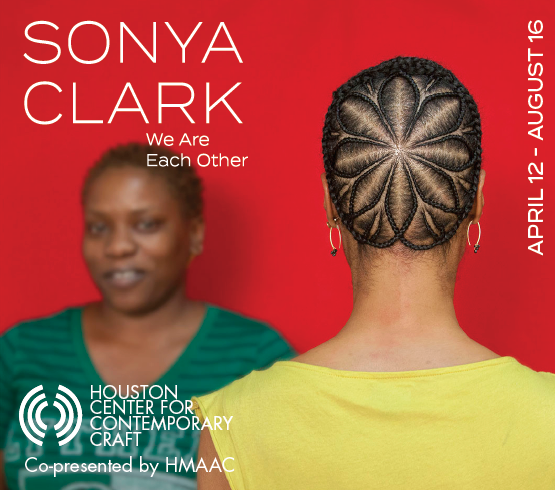Julie Kent and Stanton Welch haven’t reached the point of finishing one another’s sentences. Nevertheless, just a few months after Kent joined Welch at the helm of Houston Ballet, they show clear signs of being in sync.
Take their discussion of a headline event of the season: a new production of the evening-length Raymonda, choreographed by Welch (May 29-June 8, 2025). The Russian classic, boasting a lush score by Alexander Glazunov, has been on Welch’s mind since his youth, when he watched videotapes of his mother performing the title role with the Australian Ballet.
As a grownup leading the Houston Ballet, Welch put Raymonda on his wish list. There it remained, he says, until donors stepped up and the project suddenly took flight. Italian designer Roberta Guidi di Bagno, who created the sets and costumes for the company’s Romeo and Juliet, signed on.
“Something that I had talked about in a distant, ‘maybe’ world became very real,” Welch says. “Normally, I would have a three-year span into something like this,” but not this time. “So it feels quite fast.”
“There are lots of Zoom calls with lots of gestures”—she flails her arms to illustrate—”and lots of colors. Roberta is coming for a couple of weeks in June,” Kent continues. “That kind of creative energy takes on a life of its own. … Stanton’s going to start in the studio in June, with just a few people, just to get some (movement) vocabulary out there.”
The challenge with Raymonda, Welch says, is the plot: Set during the Middle Ages, it centers on a woman whose sweetheart goes off to fight in the crusades, opening the way for an interloper to pursue her. Welch sums up the scenario in one word: “Dull!” His version will jettison everything but the core conflict between the lovers and a villain.
“Hopefully, it will be more exciting than other productions,” Welch says.
A further example of his and Kent’s repartee comes as they discuss another of the season’s full-length ballets: The Sleeping Beauty, in the company’s time-honored Ben Stevenson production (March 13-23, 2025). Kent, of course, relates to the ballet as a former ballerina who performed the leading role.
“I love Sleeping Beauty,” she says. “I love all the solos. I love that there are lots of opportunities for people to shine—” “Women!” Welch interjects, laughing. “Women,” Kent agrees, with a smile. “There are a couple of guys who jump around. Otherwise, it’s the women.” She laughs, too.

1 ⁄9
Houston Ballet Artistic Directors Julie Kent and Stanton Welch AM. Photo by Julie Soefer. Courtesy of Houston Ballet.

2 ⁄9
Houston Ballet Principals Yuriko Kajiya and Connor Walsh in Theme and Variations, choreography by George Balanchine, © The George Balanchine Trust. Photo by Amitava Sarkar (2016). Courtesy of Houston Ballet.

3 ⁄9
Houston Ballet Principal Karina González and Joseph Walsh in Jerome Robbins’s In the Night. Photo by Leonel Nerio (2011). Courtesy of Houston Ballet.

4 ⁄9
Houston Ballet Principal Karina González and former Principal Charles-Louis Yoshiyama in Stanton Welch’s Maninyas. Photo by Amitava Sarkar (2014). Courtesy of Houston Ballet.

5 ⁄9
Artists of Houston Ballet in Stanton Welch’s Sparrow. Photo by Lawrence Elizabeth Knox (2022). Courtesy of Houston Ballet.

6 ⁄9
Houston Ballet Principal Connor Walsh in Aszure Barton’s Come In. Photo by Amitava Sarkar (2019). Courtesy of Houston Ballet.

7 ⁄9
Joffrey Company Artist Victoria Jaiani in John Neumeier ’s The Little Mermaid. Photo by Cheryl Mann. Courtesy of Joffrey Ballet.

8 ⁄9
Houston Ballet Principals Melody Mennite as Carabosse and Soo Youn Cho as the Lilac Fairy with Artists of Houston Ballet in Ben Stevenson’s The Sleeping Beauty. Photo by Amitava Sarkar (2020). Courtesy of Houston Ballet.

9 ⁄9
Artists of Houston Ballet in Stanton Welch’s Velocity. Photo by Amitava Sarkar (2014). Courtesy of Houston Ballet.
“He chose Mermaid because he felt that from the cast he had just experienced, he saw people who would be great,” Welch recalls. Kent speaks up to describe what it will mean to the company for Neumeier—who adjusts his choreography to suit each cast—to return to Houston so soon.
“All the work the dancers put into getting to know him and understand what’s important to him and his work—they can build on that,” she says. “They don’t have to wait three or four or five years. To have that immediate opportunity to work (again) with a choreographer who has really impacted the entire landscape of dance—and who is in his mid-80s—is really potent.”
“He’s like a movie director, drawing it out of you,” Kent adds, speaking as someone who has performed Neumeier’s works. “He’s very responsive to the people in front of him. That has a ticking life of its own, and (is) what makes it so rewarding for everybody. And the audience—they may not understand why, but they feel the difference. Because there is an ownership of the work that they intuitively understand.”
At the other extreme, the second mixed-rep program (Feb. 27-March 9) will unleash Lila York’s Celts, an Irish romp that dates back to 1996. “It’s from before Riverdance,” Welch exclaims with another laugh. “It’s a really high-energy ballet, and my memories are of the audiences really enjoying themselves—like at Riverdance.” He pays tribute to York, “an important female choreographer for America, with an illustrious career. … She was quite a prolific choreographer at a time when there were not many women” in the role.
On the same program, Welch’s Maninyas—his first American commission, which brought him to the attention of Houston Ballet’s then-leader Stevenson—looks at couples developing romantic bonds. “As you fall in love with them, you gradually remove different layers of yourself as you get to your true self,” he says, and the work explores “how scary that can be.”
Another view of couples and their vagaries will come through In the Night, one of Jerome Robbins’ eloquent works based on piano works by Chopin. In classic works such as Robbins’, Kent says, the dancers will benefit not only from performing them, but from learning them at the hands of the creators’ anointed repetiteurs— “the voices the choreographers trusted to share them.”
The final mixed program (June 12-22, 2025) will return to Stevenson with his Four Last Songs, set to Richard Strauss’ glowing score for soprano and orchestra: “Gorgeous, divine music. It’s one of Ben’s most iconic ballets,” Welch says. Evoking humanity “through a life cycle,” he adds, it looks at three couples, from young to old, then the finale spotlights a lone woman.
Kent summons up her own memories when she and Welch turn to the work that climaxes the program, George Balanchine’s Theme and Variations. Building from a simple beginning to a glittering close, it features a distinctive pas de deux in which the central couple’s adagio comes after their solos rather than before.
Theme and Variations is “just a great piece—a marker for technical precision, bravery, clarity, technique, musicality,” she says. At American Ballet Theater, Kent recalls, she worked her way up from one of the work’s demi-soloists to its spotlight role.
“I danced the ballerina for 10 years or so. That courage part kind of waned,” she adds, with another laugh. Welch chimes in: “It also has a remarkably hard pas de deux.” Kent: “It’s so hard!” Welch: “She does these insanely difficult, technical solos—” Kent: “Yes!” Welch: “And then after all that, a very long classical pas de deux (adagio).”
When the adagio finally arrives, Kent adds, “you’ve bitten your fingers off navigating through the solos”—she mimes chewing fingernails— “and you’re just trying to keep it alive.” Nevertheless, when all that is behind and the finale arrives, “the ending is fantastic.”
Ishida is “a classically trained ballet dancer. But she has had a very interesting career,” Kent says. “She lived in Greece for several years and was influenced by ancient Greek theater and drama. She has a really unique and creative approach to dance as theater.”
The Nutcracker will round out the season (Nov. 29-Dec. 29). And all along, the company will be settling in with its new music director and chief conductor: Simon Thew, who takes over for the retiring Ermanno Florio this summer. Since joining the company in 2022 as associate conductor, Thew has already shown his mettle, Welch says. “Like Ermanno, he is very responsive to the dancers and to the staff and the choreographers. Sometimes there can be friction between those groups,” Welch notes. And of particular value to Welch: “We had been stopped from getting the Sparrow (music) rights, since we did it last time, and he fixed that. So we’re happy with that!”
-STEVEN BROWN





